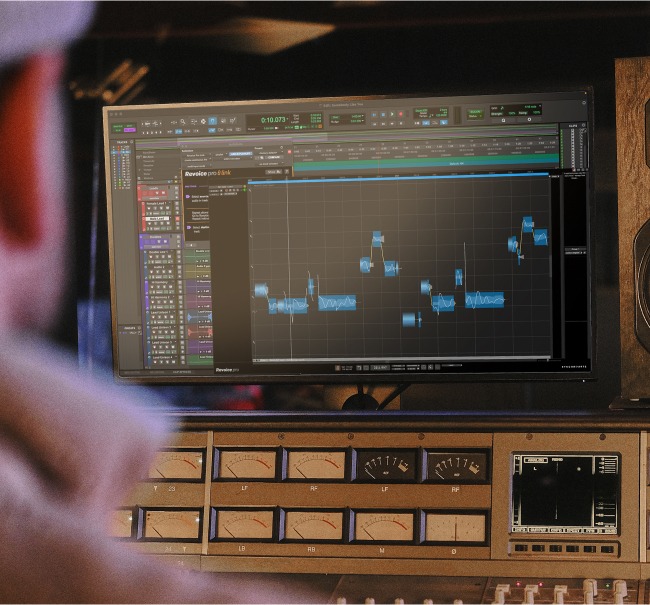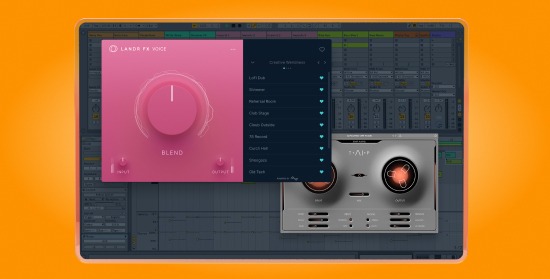
How to Produce a Vocal Session in 6 Steps

A great vocal take can make or break a track.
That’s why top artists and producers put so much effort into recording vocals as well as possible.
You may think that fancy pro gear is all it takes to get a great sound.
But even the best microphones or fanciest preamps won’t matter if the performance was poor or the recording wasn’t done right.
The real trick to polished, professional tracks is quality production. It’s a process that continues all the way to the final master.
Good vocal production goes beyond just the tools you use to record. It’s everything you do during a session to get the right end result for your track.
In this article I’ll break down how to produce a vocal session in 6 steps—even if you’re just recording yourself.
Let’s get started
1. Set up your DAW session
Any good vocal recording starts with the right setup in your DAW.
The sooner you get your tracks, busses and I/O routed, the sooner you can forget about your computer and focus on the performance.
Any good vocal recording starts with the right setup in your DAW.
Vocals are what give your tracks their human element and emotional power. If you’re confident that your DAW is set up correctly you can get down to business and focus on delivering your takes.
Your own DAW setup will vary depending on your workflow, but here are the most important things to remember for a vocal session:
- Make sure you’re recording the correct input of your audio interface
- Make sure you know how to use your DAW’s take folder or comp lanes
- Make sure you know how to punch in and out for difficult sections
- Create a bus for your vocals in case you need multiple tracks
2. Choose the right mic and setup
Not every microphone works perfectly for every voice and singing style.
In fact, the sound of different microphone types can vary so much that choosing the best one isn’t always easy.
There’s a lot to take into account when it comes to choosing a mic. If you need an in-depth overview, check out our guide to microphone choice.
But if you’re just looking for the basics, here’s what to keep in mind:
- Match the mic type to the singing style
- Think about your mix in advance
- Experiment with different mics to find what works for you
Getting mic choice right is important, but the environment where you record matters too.
Getting mic choice right is important, but the environment where you record matters too.
You can’t just record your voice in an untreated bedroom and expect to sound as good as a pro vocal booth.
But you don’t need to pay for expensive studio time to get a good vocal sound. You can get great results using a few simple techniques if you use a DIY vocal booth.
If you want a full guide to building a DIY vocal booth, go check out our tutorial post, but here are the most important issues:
- Use soft materials like blankets or pillows to cover hard surfaces
- Try to avoid cramped spaces with parallel walls
- Focus on deadening the area directly behind you where the mic is pointed
You’ll also need to use a pair of closed-back headphones to hear yourself and a pop-filter to decrease the clicks and pops that come out as you sing certain words.
3. Headroom, gain staging and monitor mix
The next most important step for producing vocals is a good monitor mix.
A monitor mix is what you hear in your headphones as you sing your vocals.
A monitor mix is what you hear in your headphones as you sing your vocals.
Make sure you have a good balance between your track and your voice in your headphones.
It’s important to hear yourself clearly, but not so loudly that you accidentally sing more quietly that you would otherwise.
Pay attention to the settings on your audio interface and in your DAW. If you hear a distracting delay, you could have an issue with latency.
To fix it you can decrease your DAW session’s buffer size or enable hardware monitoring on your interface.
One trick many producers use to make vocalists feel more comfortable while tracking is to add a light reverb to the vocals in the monitor mix.
This can help set the mood for a vocal session, but make sure you don’t accidentally print the reverb onto the main vocal.
Set up the reverb on an aux return channel so it doesn’t interfere with your vocal takes.
As you work on your monitor mix, check in on your gain staging and headroom. Vocals can be extremely dynamic, so you’ll need to make sure you leave enough room for louder passages.
If you need a refresher on headroom, head over to our guide to gain staging, but the general rule is to keep your peaks hitting at around -9 dBFS with the body of your sounds hovering around -18 dBFS.
4. Get warmed up and don’t push too hard
It’s easy to spend long periods working on vocals when you really want to get a great take.
But singing takes a lot of physical effort, so you need to make sure you don’t burn out or hurt your voice.
Singing takes a lot of physical effort, so you need to make sure you don’t burn out or hurt your voice.
The best way to prevent it is with a good vocal warm-up.
Choose a vocal warm up that makes you feel ready to sing comfortably for a long time and go through it every time you begin a vocal session.
As you’re tracking, make sure to stay hydrated and take regular breaks. Don’t keep going if you’re struggling or feeling tired—it’ll only make things worse!
5. Use your DAW to help you
Everyone dreams of tracking a perfect vocal take on the first try.
It’s not impossible to do, but it’s much more common to record several takes, punch in for the hardest spots and organize everything later into a comp track.
This is where the power of your DAW workflow really shines.
Punching in means starting the recording in a specific spot and recording only a small section of the song.
This way you can isolate tough passages and practice them until you get the performance you want.
If you’re careful to keep everything else the same you can jump around the track in any order you want to record each piece.
You’ll have to experiment to find exactly the best workflow, but here’s the basic idea:
- Start with a few full takes to get a feel for the song
- Punch in for the toughest spots
- Don’t wear yourself out on a single section, try to get usable material for every part
- Create a comp track by editing the best moments of each take together
6. Don’t worry if it doesn’t work out
Singing well depends on so many factors.
Feeling sick, tired or even just unenthusiastic can cause your vocal sessions to go downhill fast.
Feeling sick, tired or even just unenthusiastic can cause your vocal sessions to go downhill fast.
Try not to put too much pressure on yourself to make it perfect.
After all, when you have a home studio setup you can try again any time you need .
Great vocals always have a sense of energy and style. If you’re not feeling up to it, you might have better results if you try again when you’re ready.
That said, some of the greatest vocal performances of all time have been the result of less than ideal conditions.
Give yourself a chance, but don’t get discouraged if the results are perfect right away.
Great studio vocals
Tracking vocals is one of the most difficult recording situations you can find yourself in.
But you can make your vocal session easier for yourself if you follow these guidelines when you record.
If you’ve made it through this article you’ll have a great start for how to produce your own vocal sessions.
Gear guides, tips, tutorials, inspiration and more—delivered weekly.
Keep up with the LANDR Blog.




